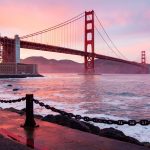Yosemite National Park, a UNESCO World Heritage Site, attracts over 4 million visitors annually. One of its most captivating natural wonders is Horsetail Fall, an ephemeral waterfall that transforms into a breathtaking “Firefall” each February. This phenomenon occurs when the setting sun illuminates the waterfall, creating a mesmerizing glow that resembles flowing lava.
In This Article
Key Points
- Horsetail Fall’s Firefall effect requires specific conditions, including sufficient snowmelt, clear skies, and the perfect sunset angle
- Photographer Galen Rowell captured the first known photograph of the Firefall in 1973, sparking widespread interest
- Social media has significantly increased the popularity of the Firefall event, leading to new park regulations and crowd management challenges
The Natural Spectacle of Horsetail Fall
Horsetail Fall is an ephemeral waterfall that cascades 1,570 feet down the eastern face of El Capitan. The waterfall’s flow is dependent on the winter snowpack and temperature fluctuations. For the Firefall effect to occur, several factors must align perfectly:
- Sufficient snowmelt to feed the waterfall
- Clear skies without haze or cloud cover
- The sun’s position at the optimal angle, typically around the second week of February
When these conditions converge, Horsetail Fall glows a brilliant orange and red for approximately ten minutes, creating a surreal and almost supernatural display.
Capturing the Firefall: Photography at Yosemite
Yosemite has a rich history of inspiring photographers, from the iconic works of Ansel Adams to the groundbreaking imagery of Galen Rowell. In 1973, Rowell captured the first known photograph of the natural Firefall, catapulting the event to fame among landscape photographers and park enthusiasts.
To photograph the Firefall, consider these tips:
- Arrive early to secure a prime viewing spot, as crowds can be substantial
- Use a tripod to ensure sharp images in low-light conditions
- Experiment with different compositions, including wide-angle and telephoto perspectives
- Utilize digital enhancement techniques to bring out the vibrant colors and details
The Ansel Adams Gallery, located within Yosemite Valley, offers photography workshops and exhibits that celebrate the park’s enduring photographic legacy.
Planning Your Visit to Horsetail Fall
To witness the Firefall, plan your visit to Yosemite during the peak viewing window in February. Keep in mind that the event’s popularity has led to increased traffic and parking challenges. To mitigate congestion, the park has implemented a reservation system and designated viewing areas.
When booking accommodations, consider options like Camp Curry, Yosemite Valley Lodge, or nearby hotels in the gateway communities. Be sure to make reservations well in advance, as lodging can fill up quickly during the Firefall season.
Yosemite Beyond Horsetail Fall: Exploring the Park
While the Firefall is a major draw, Yosemite offers countless other attractions and activities:
- Hike to iconic viewpoints like Glacier Point and Yosemite Falls
- Explore the park’s diverse landscapes, from lush meadows to towering granite cliffs
- Join a photography tour to learn from experienced guides and capture stunning images
- Marvel at the grandeur of El Capitan, a favorite among rock climbers and sightseers alike
Sustainable Tourism and Preservation Efforts
As social media has fueled the popularity of the Firefall, Yosemite faces the challenge of balancing visitor access with natural resource protection. The park has implemented several measures to manage crowds and minimize environmental impact:
- Establishing designated viewing areas and parking restrictions
- Promoting the use of the Yosemite Area Regional Transportation System (YARTS) to reduce vehicle traffic
- Encouraging responsible photography practices and Leave No Trace principles
By supporting these efforts, visitors can help preserve Yosemite’s natural wonders for generations to come.
Navigating Yosemite: Transportation and Accessibility
To make the most of your Yosemite visit, consider utilizing the Yosemite Area Regional Transportation System (YARTS). This eco-friendly bus service offers convenient access to key destinations within the park, reducing traffic congestion and parking challenges.
When planning your itinerary, aim to visit popular attractions early in the morning or later in the afternoon to avoid peak crowds. Be sure to make reservations for lodging, dining, and activities well in advance, as availability can be limited during the busy seasons.
FAQ
What is the best time of day to view the Firefall event?
The Firefall is best viewed during the brief window just before sunset, typically lasting around 10 minutes. The exact timing varies depending on the sun’s position and weather conditions.
How can I secure a reservation to view Horsetail Fall during the peak season?
To secure a reservation, monitor the Yosemite National Park website for announcements regarding the Firefall viewing season. Reservations are typically required for designated viewing areas and can fill up quickly.
Are there photography tours available for capturing the Firefall event?
Yes, several companies offer photography tours and workshops focused on capturing the Firefall. These guided experiences can provide valuable insights and techniques for photographing this unique phenomenon.
What are some other must-see attractions in Yosemite National Park?
In addition to Horsetail Fall, Yosemite is home to numerous iconic landmarks and attractions, including Yosemite Falls, Half Dome, Tunnel View, and Glacier Point.
How can visitors contribute to the preservation of Yosemite’s natural wonders?
Visitors can support preservation efforts by adhering to Leave No Trace principles, utilizing eco-friendly transportation options like YARTS, and respecting park regulations designed to protect natural resources.

